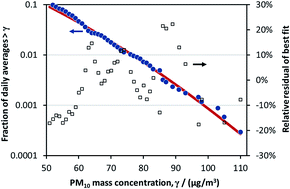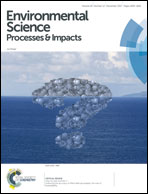Predicting the frequency of extreme air quality events
Abstract
A new method for predicting the frequency of extreme air quality events is proposed. The method is based on knowing the number of times a pollutant is measured at different concentrations during a period of data collection and fitting this data to a Weibull-type function. Extrapolation of the function to higher concentrations then allows the frequency of extreme events that did not occur during the collection period to be predicted, albeit with an unspecified uncertainty. Prediction of the frequency of events over a given concentration, which was exceeded during the period of data collection, has also been performed assuming Poisson statistics. The assumption of Poisson statistics enables the provision of an uncertainty statement to accompany the prediction. The methods are trialled on a data set of daily average PM10 mass concentrations recorded at Marylebone Road in London between 2007 and 2016, inclusive. Using the method it was predicted that a daily average PM10 mass concentration of over 100 μg m−3, corresponding to the highest UK Daily Air Quality Index band, should be expected once in just over three years and this agreed well with real observations, demonstrating the utility of this new technique.

- This article is part of the themed collection: Celebrating our 2020 Prize and Award winners


 Please wait while we load your content...
Please wait while we load your content...